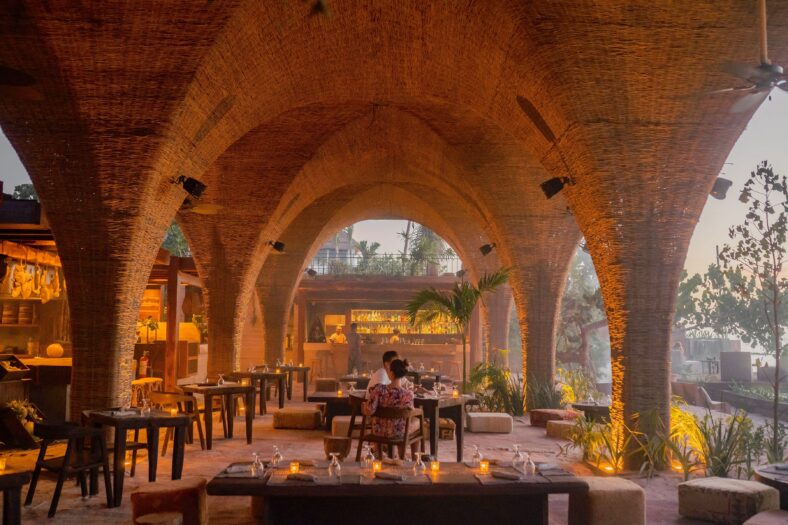
Three hours south of Cancun and only reachable by boat, with 26 miles of splendid beach and pristine jungle and crystal clear, flamingo-flecked waters tucked between the Gulf and the Caribbean—Mexico’s Isla Holbox takes a bit of effort to get to and thus has long been an insider’s escape, a bit of a gem hidden in plain sight.
And while development is on the increase, so far new hospitality projects have been sensitive to the unspoiled nature of the environment, especially critical on an island with limited infrastructure where there are essentially no cars. Boutique luxury hotels with minimal footprints are the only viable option.
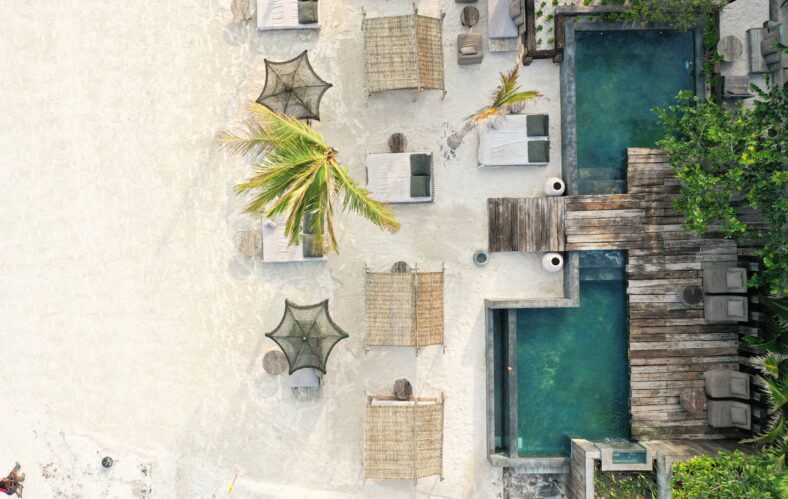
Of course, the quality of these can vary widely. But the recent opening of Nomade Holbox is a big win for the island. Yes, the original concept comes from Tulum—and you will find purists who say they don’t want Holbox to be the “new Tulum,” with hordes of reckless partiers descending en masse—but there seems little danger of that for the foreseeable future. Nomade, with its focus on wellness and sustainability, is perfectly in keeping with Holbox’s more organic aesthetic.
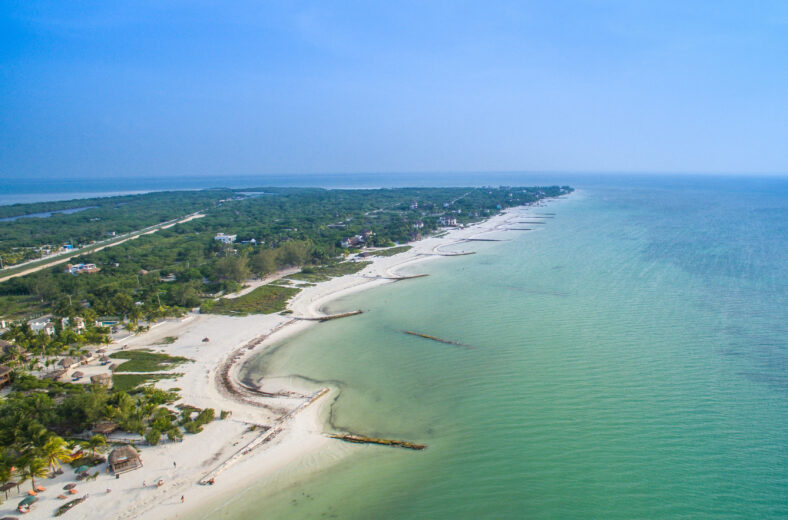
And Holbox, by virtue of being an island, located within the federally-designated Yum Balam Nature Reserve, is both infinitely safer and more laid back, bohemian but not the Prada-wearing kind. It also has more room to accommodate different types of projects, rather than having to cram them all along the same stretch of unpaved road, though high-rises will never be welcome anywhere on the island thanks to strict regulations.
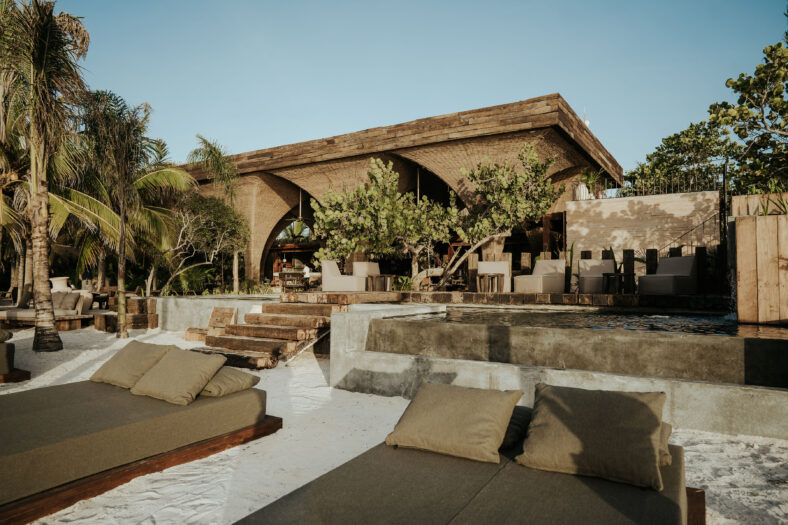
Nomade Holbox meanwhile has already won recognition from Michelin’s first-ever guide to Mexico, which recently awarded the ethereal property a Michelin Key, the hospitality equivalent of the star it doles out to the world’s finest restaurants. It provides a kind of escape hatch from civilization while offering wellness amenities and a chill factor that is established the minute you arrive via a winding path through the jungle.
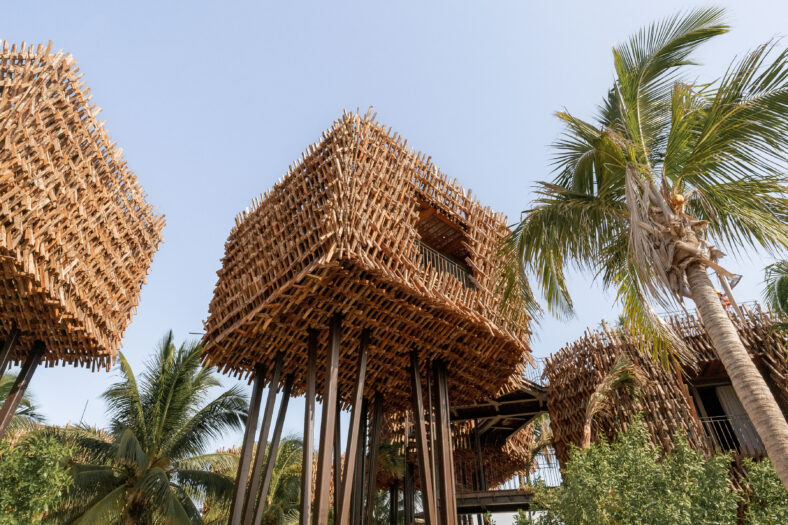
The hotel was architecturally designed to weave into its environment and highlight the unique setting. The 30 suites are crafted and themed with earth and sky in mind. Nearly all within is made from sustainable and indigenous woods. Natural sunlight is everywhere. Thatched roofs mix with exposed beams, timber, and canvas. Walls seem like an afterthought. You can birdwatch from your balconies, patios, and comfortable beds.
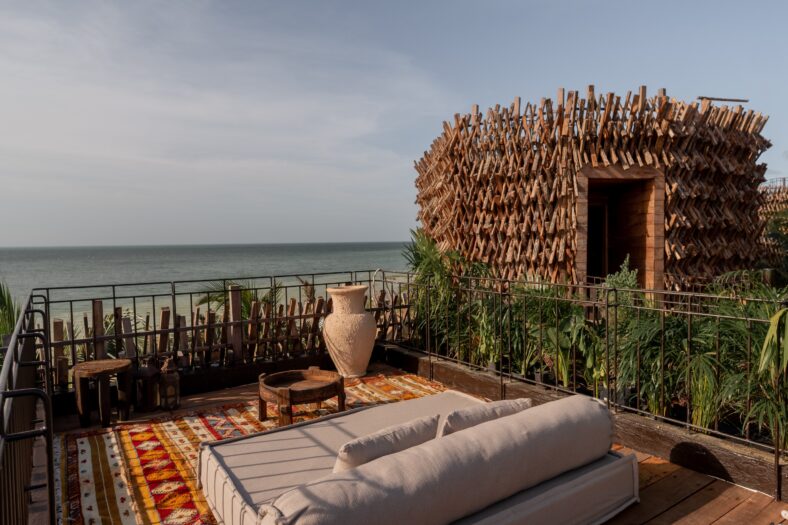
All three suite configurations have their virtues. Neutral tones let nature speak for itself. Yet the Treehouses take it up a notch, as it were: 25 feet above the sands. Leave big suitcases behind. They are only reached from outdoor spiral staircases. The views astound and the outdoor showers are primordial bliss. The Moon Temple rooms feature wrap-around canvas enclosures that are reminiscent of dwellings, but with all mod cons.
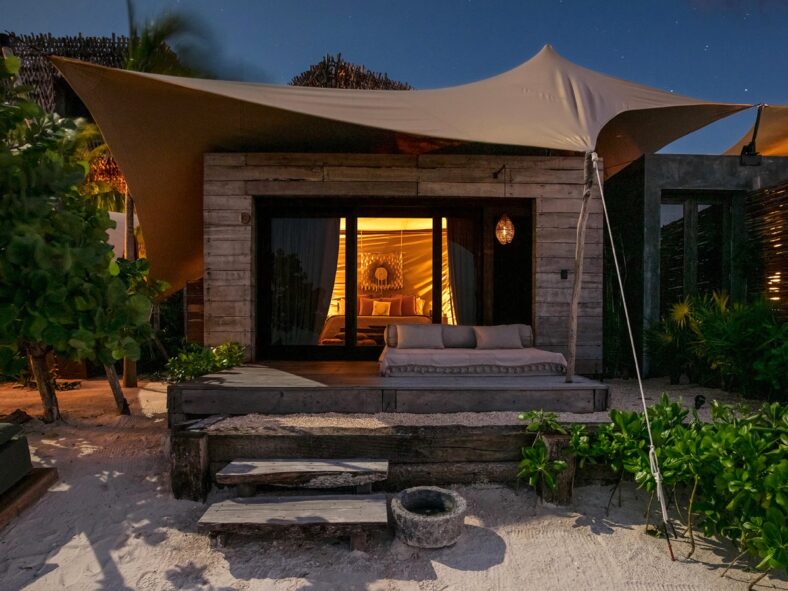
The canvas walls of the jungle rooms have a glamping feel that’s perfectly in tune with the locale. Private patios feature copper tubs surrounded by lush vegetation and views to die for. All suites include bespoke furnishings, divine linens, and spacious beds. The top-drawer accommodations are the Ocean Front Suites which include outdoor carved-stone baths, and lounge areas fronting directly upon the beach.
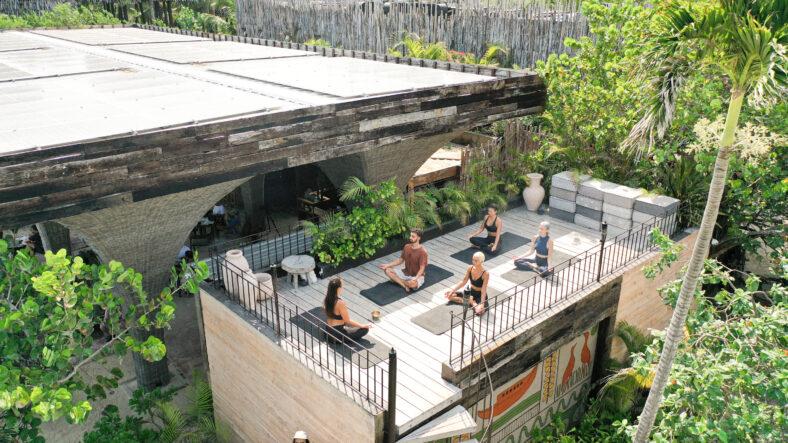
As for extracurricular activities, “The focus here is on wellness,” as the Michelin Guide notes: “Mayan-inspired sound healing, breathwork, and yoga are offered inside a structure that’s unironically called the Gratitude Tent. Add to that pilates, “cacao ceremonies,” hot-stone massages and sound baths. Of course, guests can simply take strolls on the beach or bask in the pool.
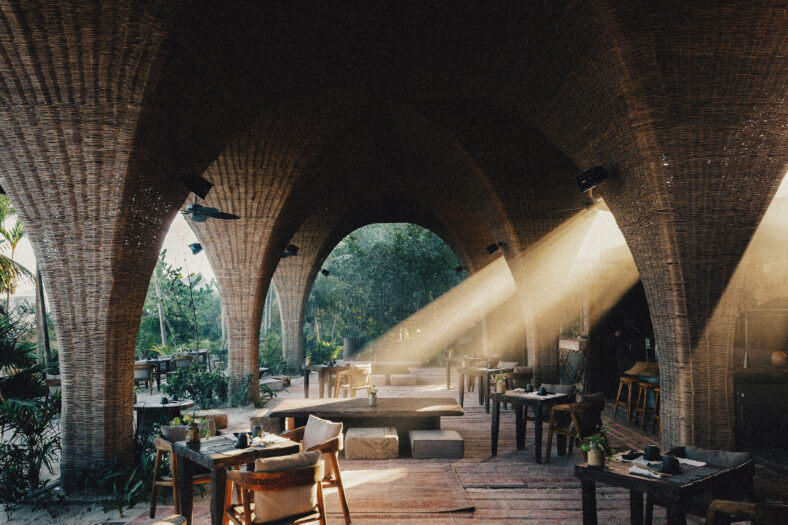
Many resorts of want to give guests a so-called “eclectic” (read: homogenous) mix of dining venues, featuring four or more experiences; Nomade Holbox concentrates on having one perfect place, the wicker-arched La Popular, suitable for bare feet as you prefer during breakfast, lunch, and dinner. Take in a passion-fruit margarita while relaxing in the incense-wreathed atmosphere of the open-air dining room or lounge seating facing the azure waters.
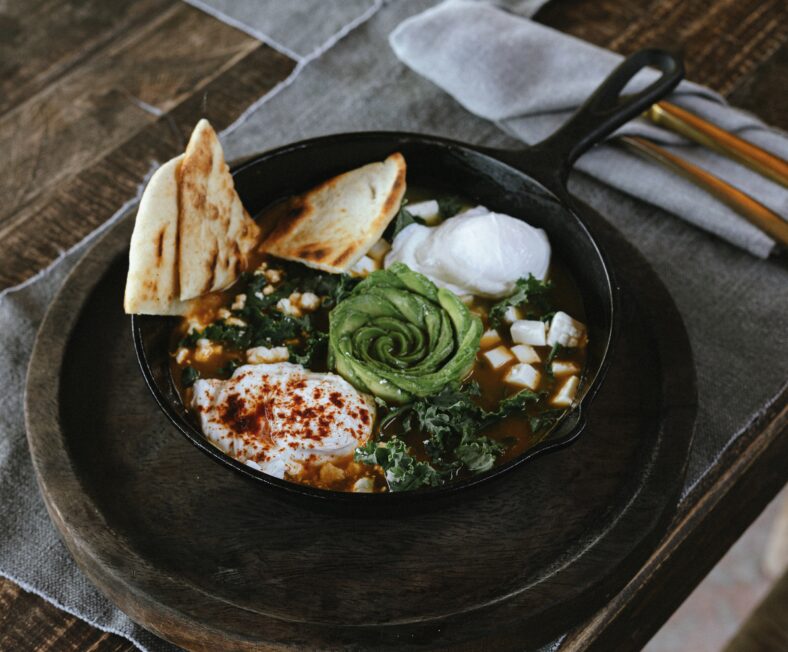
According to the hotel, “We break from the concept that formal dining is good dining. We eat with our toes in the sand, backlit by the changing colors of the sky…. Communal tables are fashioned from a tree trunk. Our menus honor food as a resource from nature, highlighting an abundance of local produce and simplicity of ingredients.” As you can imagine, the seafood is as fresh as can be, and grilled Caribbean lobster is a must-try; influences are Peruvian-Japanese blended with traditional Mexican preparations.
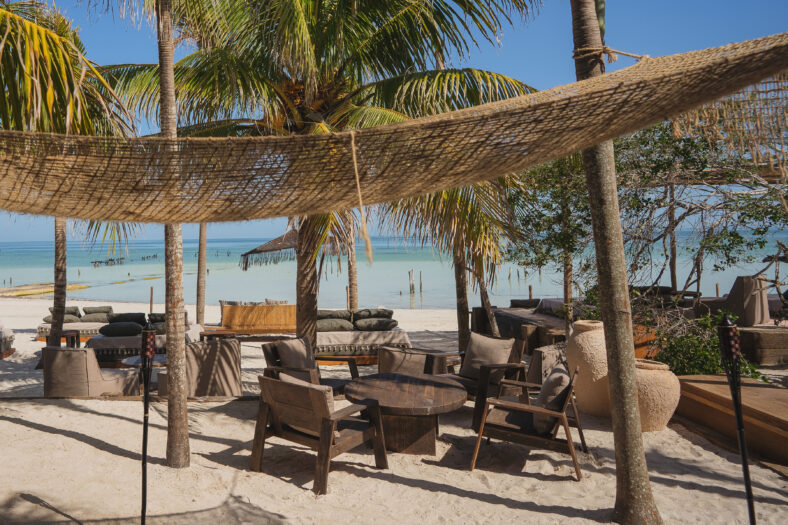
In “town” meanwhile—Holbox’s picture-perfect village is a 15-minute ride away in an ATV-turned-taxi, while shopping for homespun textiles and embroidered items around the main square, visitors can tap fun open-air bars and cafes that serve pressed juices and cocktails amid the weatherbeaten pastel facades and all those Instagram-friendly, hand-painted signs. There’s even a dog shelter where you can take the adorable pups out for a walk on the beach.
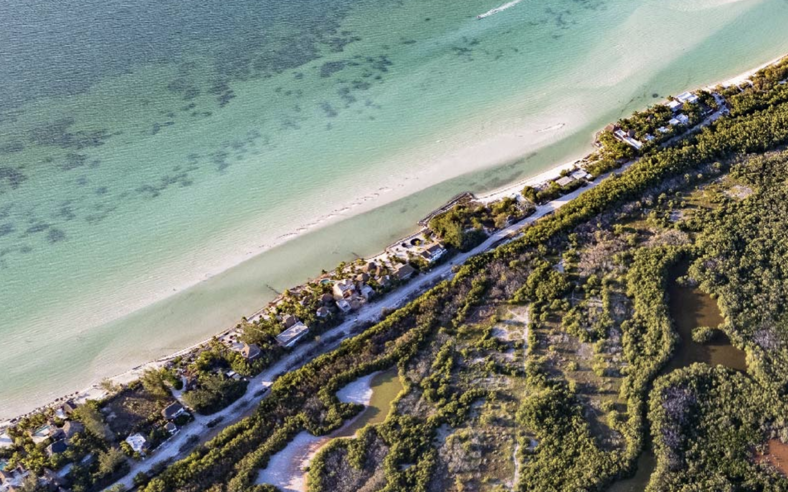
Walk along the beach to get to town if you prefer—just take note of the tides. And we’d counsel you to avoid rainy season where ditches quickly fill up with mud and sand. With continued, even sensitive, development, funds need to be earmarked for improving roadways and drainage, and that all-important infrastructure. Hotels like Nomade Holbox, which runs mainly on solar power, are doing all they can to honor the island and encourage responsible tourism. There is no sense that Holbox is in danger of getting “ruined”, but we’d say there’s no better time to visit then right now.















